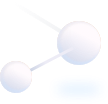Cephalopods (e.g., octopus, squid, and cuttlefish) can change their skin colors and patterns for camouflage or communication. Camouflaging cephalopods attempt to recreate the visual texture of their surrounding environment on their skin, in part by controlling the size of millions of skin pigment cells, called chromatophores . How does the chromatophore system generate countless different texture-matching patterns? Using computer-vision methods to track > 100,000 chromatophores in behaving cuttlefish Sepia officinalis , we quantitatively described camouflage behavior at single-cell resolution. We found that the motion of camouflage patterning appears not to be pre-programed. Skin patterns meander in a high-dimensional pattern space in search for a good match with the environment. As patterns “move” along these paths, chromatophores are coordinated in highly- flexible manners. We further identified a series of regions in pattern space, where cuttlefish tend to hold and compare their skin pattern to environment, as they progressively minimize the difference between them. These findings reveal the complexity of the chromatophore control. To understand how the complexity has evolved, we compared Sepia with another cephalopod, the bobtail squid Euprymna berryi , which lacks complex skin patterns. We found a difference in the organization of their chromatophore brain regions : a somatotopic map of motoneurons is present in Sepia but absent in Euprymna . Together our studies may start to uncover organizing principles in the neural circuits that generate a high-dimensional motor output, and may reveal how such neural circuits changed adaptively during evolution.

Max Planck Institute for Brain Research / Peking University
Julian Mak at jclmak@ust.hk


